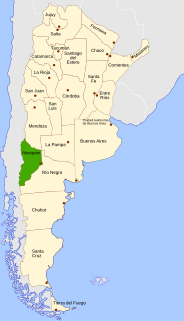
Uruguay, officially the Oriental Republic of Uruguay, is a country in the southeastern region of South America. It borders Argentina to its west and Brazil to its north and east, with the Río de la Plata to the south and the Atlantic Ocean to the southeast. Uruguay is home to an estimated 3.44 million people, of whom 1.8 million live in the metropolitan area of its capital and largest city, Montevideo. With an area of approximately 176,000 square kilometers (68,000 sq mi), Uruguay is geographically the second-smallest nation in South America, after Suriname.

Uruguay is a country in Southern South America, bordering the South Atlantic Ocean, between Argentina and Brazil. It is located in the Southern Hemisphere on the Atlantic seaboard of South America between 53 and 58 west longitude and 30 and 35 south latitude. It is bordered to the west by Argentina, on the north and northeast by Brazil, and on the southeast by the Atlantic Ocean, which makes up Uruguay’s coast.
The Transport network in Uruguay consists of 1,641 km of rail network, 7,743 km of roads, 1,600 km of navigable waterways, and 15 airports/landing fields.

Nueva Helvecia is a city in Colonia Department of Uruguay.

The Gran Gasoducto del Sur was a proposed 8,000–15,000-kilometer (5,000–9,300 mi) long natural gas pipeline to connect Venezuela, Brazil and Argentina. The overall project cost was expected to be around US$17-23 billion.
The Yabog pipeline is a natural gas pipeline. It is 441 kilometres (274 mi) long and connects Río Grande in Santa Cruz de la Sierra, Bolivia, with Campo Duran in Salta Province, Argentina. The pipeline was commissioned in 1972.
Paraná-Uruguayana pipeline is a natural gas pipeline from Aldea Brasilera, Paraná in Argentina to Uruguaiana in Brazil.
The Bolivia–Brazil pipeline (GASBOL) is the longest natural gas pipeline in South America. The 3,150 kilometres (1,960 mi) pipeline connects Bolivia's gas sources with the south-east regions of Brazil.

Brazil–Uruguay relations encompass many complex relations over the span of three centuries, beginning in 1680 with the establishment of the Colônia do Sacramento, to the present day, between the Federative Republic of Brazil and the Oriental Republic of Uruguay. Brazil and Uruguay are neighbouring countries in South America, and share close political, economic and cultural ties. The singularity of the bilateral relationship between the two countries originates from a strong historical connection – marked by important events, such as the establishment of the Colônia do Sacramento in 1680, the invasion of the Banda Oriental by Brazil in 1815 and the subsequent creation of the Província Cisplatina, and Uruguay's independence from Brazil in 1828. The bilateral relationship was further defined by the Uruguayan Civil War (1839–1851) and the Paraguayan War (1864–1870).
The GasAndes Pipeline is a 463-kilometre (288 mi) long natural gas pipeline from La Mora, Mendoza in Argentina to San Bernardo on the outskirts of Santiago, Chile.
Gasoducto del Noreste Argentino is a proposed 1,465 kilometres (910 mi) long natural gas pipeline to transport natural gas from Bolivia to Argentina.
The mining sector contributes only 0.1% to the GDP of Uruguay. Uruguay’s mineral commodities include clays, semiprecious gemstones, gold, iron and steel, sand and gravel, and stone. Uruguay has no proven natural gas or oil reserves but it does have substantial hydroelectric capacity.

The Uruguayan railway network has approximately 2900 km (1802 mi) of lines, all of 1,435 mm gauge, diesel traction with only 11 km (7 mi) of double track. Only half of the network is currently active. All the Uruguayan lines start from Montevideo, connecting the cities of Paysandú, Salto, Rivera and Río Branco. The rest of the lines (closed) connected the capital city with Fray Bentos, Cuareim, Artigas, Km. 329, Melo, La Paloma and Colonia del Sacramento.
The Vía Verde project, also known as Gasoducto del Norte, was a pipeline project proposed by the administration of Governor Luis Fortuño intended to supply natural gas to northern Puerto Rico from Puerto Rico's southern region. The pipeline would have run from Peñuelas, on Puerto Rico's southern coast, to electricity-generating plants in Arecibo, Cataño and San Juan, crossing the island's Cordillera Central. The project aimed to supply 71% of Puerto Rico's electrical energy needs, while lowering the cost of electricity in the island. A project of Governor Luis Fortuño, it was called the "crown jewel" project of his administration. The project was also supported by former governor of Puerto Rico Rafael Hernández Colón. The pipeline was called "the centerpiece of [Governor Fortuño]'s efforts to kick-start Puerto Rico's dormant economy."
The 2003 South American Youth Championship is a football competition contested by all ten U-20 national football teams of CONMEBOL. The tournament was held in Uruguay between 4 January and 28 January 2003, it was the 21st time the competition has been held and the second to take place in Uruguay. Argentina won their fourth trophy.

Route 1 is a national route of Uruguay. In 1975, it was assigned the name Brigadier General Manuel Oribe, a national hero of Uruguay. It connects Montevideo with Colonia del Sacramento to the west along the coast. The road is approximately 177 kilometres (110 mi) in length.

The 2015 South American Youth Football Championship was the 27th edition of the biennial international youth football tournament organized by CONMEBOL for players aged 20 and below. It was held in Uruguay from 14 January to 7 February 2015.
















